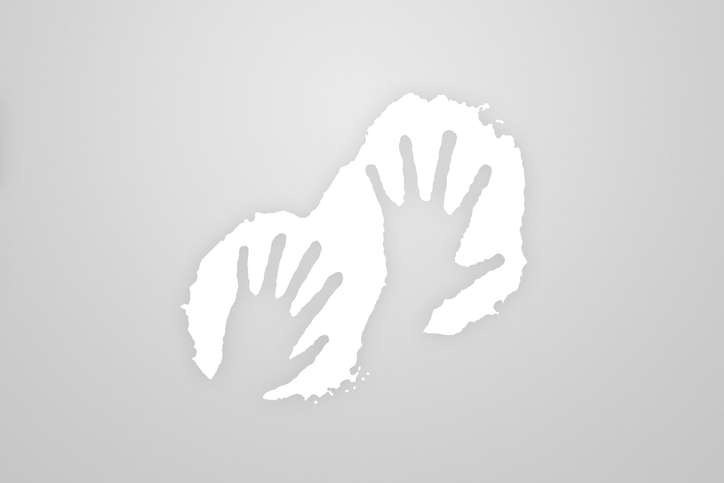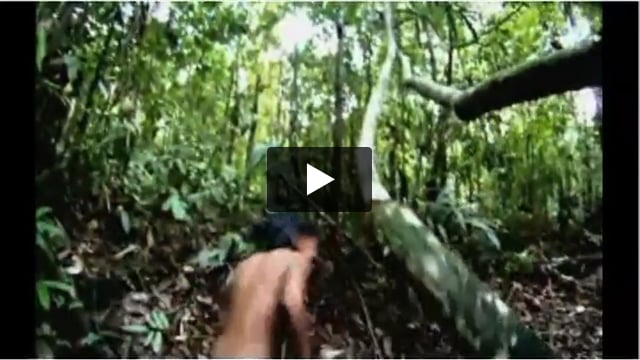Keep evangelical missionaries away from uncontacted tribes
HELP PROTECT UNCONTACTED TRIBES NOW
UPDATE: The appointed head of the Uncontacted Tribes Unit of FUNAI, Ricardo Lopes Dias, linked to the New Tribes Mission (NTM), has now been removed from office.
 © Ricardo Lopes DiasEvangelical missionary Ricardo Lopes Dias has been forced from office as head of the Uncontacted Tribes Department – for the second time.
© Ricardo Lopes DiasEvangelical missionary Ricardo Lopes Dias has been forced from office as head of the Uncontacted Tribes Department – for the second time.
 © Ricardo Lopes Dias
© Ricardo Lopes DiasThe NTM still functions, now “rebranded" as Ethnos360 in the USA, and is one of the largest and most extreme missionary organizations on Earth. Their objective is to contact and evangelize all uncontacted peoples around the world.
Uncontacted tribes have no resistance to common diseases introduced by outsiders and entire tribes have been wiped out following first contact. Brazil’s policy for over 30 years has been not to initiate contact with isolated peoples, for their own safety.
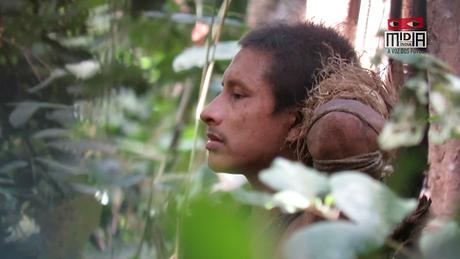
The NTM wants to overturn Brazil’s policy of no contact. Its president, Edward Gomes da Luz, told the BBC that missionaries should be free to act in any Indigenous community, including uncontacted communities. "There has to be a policy of approaching these peoples," he said.
The NTM lobbied the Brazilian government to appoint Ricardo Lopes Dias to head the uncontacted Indians unit, according to Mr Luz’s son.
Ricardo Lopes Dias himself worked as an NTM missionary from 1997 – 2007 in the Javari Valley, home to the greatest concentration of uncontacted tribes in the world. He actively attempted to convert Indigenous communities.
NTM Brazil’s Facebook page celebrates the recent purchase of a new helicopter to be used in the western Amazonian state of Acre. One of their missionaries declares in a fundraising video that it will be used to locate the uncontacted communities living in that region.
They say: "This new helicopter flight program will enable Ethnos360 Aviation to serve all our current missionaries in the region and open the door to reach ten additional people groups living in extreme isolation."
Indigenous leaders in the Javari Valley have denounced the NTM’s plans as “a genocidal onslaught”. Survival International stands with them, will you?
Click here to donate to our campaign
Beto Marubo of UNIVAJA says: "Among us Marubo, they [the NTM Brazil] destroyed our social organization, our coexistence. Differences arose, in addition to destroying the world in which we were educated for millennia…. Missionary activities will mean the total loss of the last uncontacted peoples we have in the Javari Valley."
Waki, a Matsés leader says: “I don’t want Ricardo in FUNAI. We know Ricardo well. He learned our language. We don’t want the church here because we can’t paint our faces, we can’t take snuff and we can’t use frog poison. That’s why I won’t let him in here.”
Matsés people said in an open letter: “Mr Ricardo never had permission to come to our village. He manipulated part of the Matsés population in order to build a new village…. The leaders tried to go to this new village to open up a dialogue but they were violently expelled. Mr Ricardo took advantage of the Matsés, and appropriated our culture. We do not want new abuses, so we will not allow Mr. Ricardo to enter our land. ”
Paulo Marubo, President of UNIVAJA says: “They tell young people that the Indigenous movement only gets in the way, and that not every culture is culture and is the Devil’s making…. Once a pastor always a pastor.”
Jump To...
- Evangelicals in Bolsonaro’s Brazil
- Missionaries and Indigenous peoples
- Why can missionaries be dangerous?
- They can bring lethal diseases
- They have introduced child abuse and prostitution
- Some missionaries “rescue” children from their parents
- They show racist contempt for Indigenous people
- "Kill the body, save the soul"
- They facilitate access to Indigenous land and resources
- Their religious fanaticism means they never give up
- Learn more about uncontacted tribes
Evangelicals in Bolsonaro’s Brazil
In 2017 Bolsonaro declared: “God above everything. There is no such thing as a secular state. The state is Christian, and any minority that is against this has to change.” Twice as many evangelicals voted for Bolsonaro than for his nearest rival in 2018.
 © Agencia Brasil CC-BY-3.0-BR
© Agencia Brasil CC-BY-3.0-BR
Today, evangelicals are in positions of considerable political power in the Brazilian government and Congress, and if unchecked, they are poised to inflict huge damage on Indigenous peoples and their constitutional rights, far beyond the religious sphere.
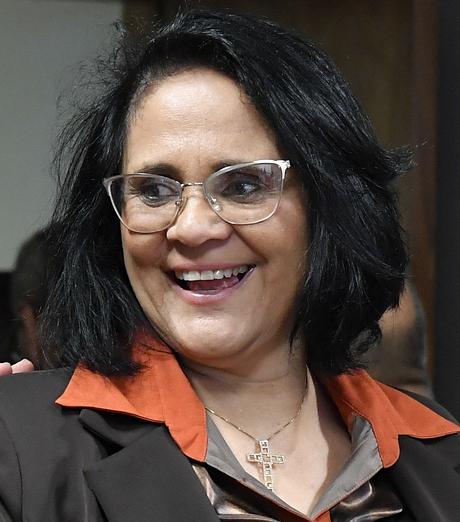 © Geraldo Magela/Senado Federal do Brasil
© Geraldo Magela/Senado Federal do Brasil
In 2019, President Bolsonaro appointed Damares Alves, an evangelical pastor, as Minister of Women, Family and Human Rights. She also thinks that “the moment had arrived for the church to govern,” and has questioned Brazil’s policy of not forcing contact with isolated tribes. Before she took office, Ms Alves declared: “We are going to bring them [uncontacted tribes] to the forefront, not because they are uncontacted, but because they are forgotten and left to the care of NGOs. It is the state who will take care of these uncontacted people.”
Clearly emboldened by Bolsonaro, evangelicals of other denominations have been attempting to contact uncontacted tribes. A member of the Baptist Bible Fellowship International is being investigated by the authorities in Brazil for entering the territory of the uncontacted Hi-Merimã in 2019. He and his guides had gone into abandoned camps and according to FUNAI “put the lives of an entire uncontacted tribe at risk.”
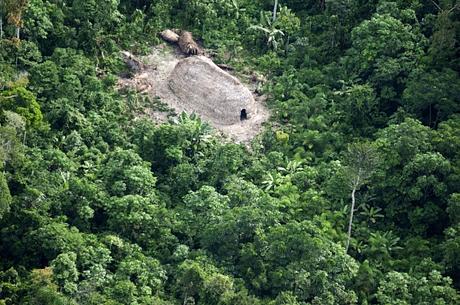 © Peetsa/FUNAI/CGIIRC Archive
© Peetsa/FUNAI/CGIIRC Archive
The Javari Valley Indigenous organization UNIVAJA denounced three evangelical missionaries, who entered an area which is home to an uncontacted group, in 2019. There were fears the missionaries were there to try to force contact. UNIVAJA is warning that one of them is now preparing to return to the Javari Valley territory to contact an uncontacted group in the Javari Valley.
Missionaries and Indigenous Peoples
The NTM has its main headquarters in the USA. It raises massive sums of money to fund a global empire of around 3,000 missionaries operating in Latin America, Asia and Africa. Established in 1943, its founders declared: “By unflinching determination we hazard our lives and gamble all for Christ until we have reached the last tribe regardless of where that tribe might be.”
Globally, however there is a broad spectrum of missionary organizations working with Indigenous peoples, some are comparatively benign or benevolent, some are more radical and uncompromising in their defense of Indigenous peoples.
Most notable are some Catholic missionaries influenced by liberation theology, who do not see it as their job to evangelize but rather to foster relationships with Indigenous communities, based on inter-faith dialogue and respect.
Many have been targeted and murdered for standing alongside Indigenous peoples and campaigning for their rights.
In 1971, under the auspices of the World Council of Churches, a group of anthropologists met in Barbados to discuss the situation of Indigenous peoples. The “Declaration of Barbados – for the liberation of the Indians” denounced human rights abuses committed by governments, missionaries and others. It condemned religious missions and their “imposition of criteria and patterns of thought and behaviour alien to the colonised Indian societies. A religious pretext has too often justified the economic and human exploitation of the aboriginal population.” It called for the suspension of all missionary activity and called on missionaries “to support Indian liberation.”
In a historic speech in Santa Cruz, Bolivia in 2015, Pope Francis acknowledged the suffering the Catholic Church had inflicted on Indigenous peoples and said: “I humbly ask your forgiveness, not only for the offenses committed by the Church herself, but also for the crimes committed against the native peoples during the so-called conquest of America…. Many grave sins were committed against the native people of America in the name of God.”
Help Protect Uncontacted Tribes
Why can missionaries be dangerous?
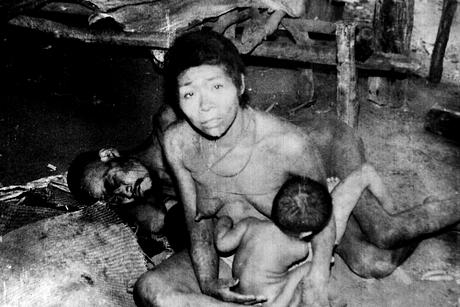 © A. Kohmann/Survival
© A. Kohmann/Survival
Missionaries can introduce devastating diseases to tribal communities
A major criticism of the NTM is the huge risk its evangelizing efforts pose to uncontacted and recently contacted tribes who are highly vulnerable to introduced diseases such as ‘flu, measles and chicken pox, to which they have no immunity.

The Yanomami are the largest relatively isolated tribe in South America. They live in the rainforests and mountains of northern Brazil and southern Venezuela.
In 1967 the daughter of an NTM missionary arrived at a Yanomami mission camp in northern Brazil carrying measles, which soon infected the highly vulnerable Yanomami. The NTM was ill-prepared to deal with the ensuing epidemic, in which 165 Yanomami became infected and 17 died.
The missionaries did not appear overly concerned, or express guilt, at this catastrophe. One noted: “It was hard to realize that many of our friends had passed on to eternity without knowing Christ. Yet, we know that God never makes a mistake.”
Another NTM missionary complained that the Yanomami seemed content with their culture and were unwilling to accumulate material possessions by work and saving.
In 1987, the NTM secretly contacted the Zo’é tribe in northern Brazil. Soon after, many fell ill from flu and malaria to which they had no immunity. About a quarter of the Zo'e people were killed by these diseases between 1982 and 1988. Jirusihú, a Zo’é man told Survival: “Before, when there was no white man, the Zo’é did not have sickness. In the past there were a lot of children, women, nowadays, there are not many.”
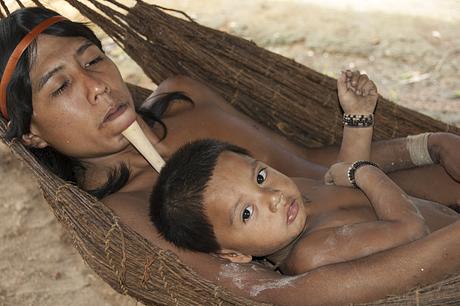
Write to the Brazil Justice Minister
Missionaries have committed child abuse and introduced prostitution to tribal communities
WARNING: A group of women, whose parents joined NTM when they were children, talk about sex abuse they suffered at the hands of missionaries at school.
In 2019 five American women revealed on NBC news that they had been sexually abused by two NTM missionaries while attending NTM mission schools. Some were as young as six at the time.
The NTM covered up the abuse for years; one victim told NBC: “Deeply religious organizations are great places for paedophiles to hide…. The culture of silence was built into the training. Do not gossip, do not speak about anything that doesn't edify. It's just a recipe for abuse.”
The NTM’s CEO issued an apology for “the horrific abuse they suffered from the perpetrators while attending an NTM boarding school as children, and mishandling of the situations when they were first brought to NTM’s attention approximately 30 years ago.”
In 2013 an NTM missionary was arrested in the US and sentenced to 58 years in prison for sexual abuse and production of pornographic material involving Katukina Indigenous children in Brazil.
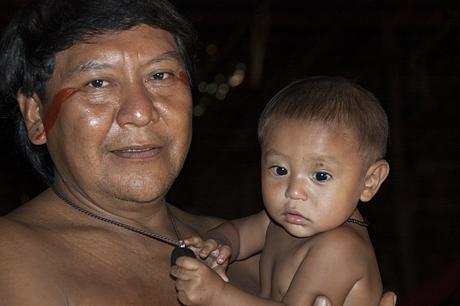
Davi Kopenawa Yanomami recounts how an NTM missionary who had already got a young married woman pregnant, started to sleep with a Yanomami girl. “I was furious that he still claimed to be part of the people of Teosi [God]!” says Davi. “He tricked us with all his lies.” The NTM’s response was simply to dismiss the missionary, who later got work with FUNAI.
Liquid error: internal
Other reports reveal that NTM’s evangelization tactics led to the prostitution of Indigenous children. The writer Norman Lewis visited the Panare tribe in Venezuela in 1983 and describes how the Indians had to pay dues to the missionaries. With no tradition of accumulating goods, some had very little to sell off to pay their debts to the extent that one Panare man prostituted his daughter.
After they had been forcibly settled and deprived of their land by farmers, Ayoreo and Aché children in Paraguay were forced into prostitution or working in wage slavery on the ranches. The NTM appears to have done little or nothing to stop the abuse and even benefited from it: Norman Lewis describes how NTM missionary Jim Stolz hired four Aché as labourers to local farmers in return for money for the mission funds.
Members of the Suruwaha people tell how evangelical missionaries Márcia and Edson Suzuki told the tribe they were taking a little girl, Hakani, to get medical treatment, but never brought her back. The couple had in fact adopted the girl and falsely claimed that members of the tribe tried to kill Hakani by burying her alive because she was disabled. They then used this lie to raise money and gather support for legislation that would allow Indigenous children to be taken away from their parents by force.
Some missionaries try to “rescue” children from their parents
Damares Alves, the Minister of Women, Family and Human Rights, is the founder of an evangelical NGO called Atini, which is behind a controversial bill in Congress known as Muwaji’s Law. If this legislation is approved, it would give the state, and by extension missionaries, the power to remove Indigenous children from their communities on the mere suspicion they may be at risk. It is easy to see how this law could be manipulated and subverted by zealous evangelical groups who already have a history of removing Indigenous children from their communities under various pretexts.
Minister Damares Alves, a qualified lawyer, is currently under fire from Indigenous women and opposition groups for not following formal legal procedures when she adopted Lulu, a six year old Kamayurá Indian girl.
According to the Kamayurá the child was taken from the community for dental treatment and never came back. Her family say the minister did not ask for their permission to adopt the child nor even inform them of her plan.
An Australian TV documentary broadcast in 2011 was filmed in co-operation with Atini (an evangelical organization co-founded by Brazilian Minster Damares Alves) and invited viewers to send donations to it. The film falsely portrayed the recently contacted Suruwaha tribe as evil, Satan-worshipping baby killers, perpetuating the myth that recently contacted tribes are more violent than other societies.
Survival made a formal complaint to Australia’s broadcasting regulator arguing that the film’s portrayal of the Suruwaha was false and incited racial hatred (many viewers’ comments online were deeply hostile and racist – one called for the tribe to be killed). The complaint was upheld by a federal court.
Help Protect Uncontacted Tribes
They show racist contempt for Indigenous people
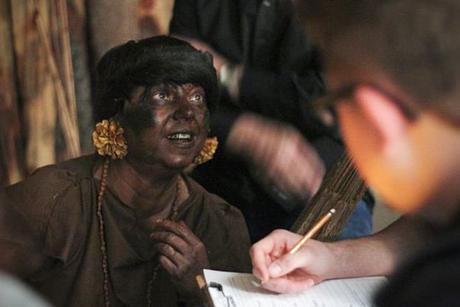 © NTM
© NTM
Underlying the NTM’s extreme religious beliefs is a strong element of racism and contempt for Indigenous peoples and their diverse religions, cultures and livelihoods. Brown Gold, the NTM’s monthly newsletter (since rebranded) described Indigenous peoples as “little brown savages” and their religion as “a spiritist form of worship which is energized by Satanic forces.”
The NTM operates using fear and brainwashing. Desperate to convert the Panare tribe in Venezuela its missionaries resorted to telling them that the Panare had killed Jesus Christ. The barrage and instilment of guilt forced some Panare to succumb and “abandon their Satanic ways.” An NTM missionary described the Yanomami as “complete savages who don’t use clothes and are totally enmeshed in witchcraft and adoration of the Devil.”

The Yanomami believe strongly in equality among people. No hunter ever eats the meat that he has killed. Instead he shares it out among friends and family. In return, he will be given meat by another hunter.
The controversial anthropologist Napoleon Chagnon, who worked with the Yanomami in Venezuela, was introduced to the tribe by an NTM missionary whom he called a “good friend.” Chagnon describes the Yanomami as “sly, aggressive and intimidating”, echoing some of the NTM’s derogatory characterizations of tribal people.
Chagnon donated money to the NTM and wrote to their president expressing “satisfaction with the way field workers have approached their task of evangelizing the Yanomami” which he described as a “thankless task.” He said the Yanomami were “fortunate” to have the missionaries and “it is merely wishful thinking to suppose that today’s primitives will remain unaffected by Western Culture.”
Perhaps the most notorious incidents involving the New Tribes Mission occurred in Paraguay in 1979 and 1986 during the Stroessner dictatorship, when NTM missionaries helped organize "manhunts" of uncontacted members of the Ayoreo tribe. Several people were killed in these encounters, in which Ayoreo groups were forced out of the forest, and many others died afterwards of disease.
Following these controversial manhunts Survival asked the NTM how many newly contacted Indians survived contact. Les Pederson, the NTM coordinator for Latin America replied: “We don’t keep that sort of detailed record. They are all pretty well mixed up with the others down there and those Indians all look pretty much the same.”
HELP #STOPBRAZILSGENOCIDE
They don’t care about the body as long as they get the soul
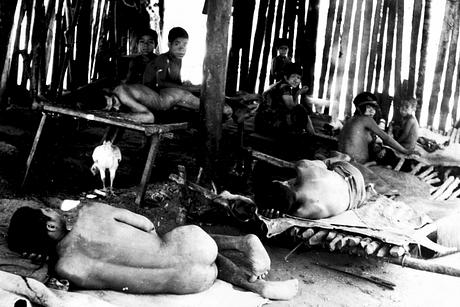 © A. Kohmann/Survival
© A. Kohmann/Survival
In 1975 the writer Norman Lewis visited the NTM’s camp for recently contacted Aché people in Paraguay and called it the “most sinister experience” of his life. In an appalling scene he describes the survivors of a recent manhunt: “two old ladies lying on some rags on the ground in the last stages of emaciation and clearly on the verge of death… there was no food or water in sight…. One woman … was in a desperate condition with untreated wounds on her leg. A small, naked, tearful boy sat at her side”.
Survival researcher Luke Holland visited another NTM mission camp in Paraguay in 1979 and described meeting an Ayoreo family who survived a manhunt: “The boy, Dapui was under his ‘blanket’… A terrible sight. Four people. A young man, his hair tied in a big pony-tail. His wife, Dujaenguta, her leg in plaster. She had walked in on it, broken in two places, after falling from the tree in a hunt. Her right breast had been shot away in a previous encounter with ‘tame’ Indians from El Faro Moro [the NTM mission camp].
 © Luke Holland/ Survival International 1979
© Luke Holland/ Survival International 1979
"The fourth old man Eode – the woman’s father. All had symptoms of ‘flu and were constantly coughing. They had running eyes and were in a filthy condition. The old man, wasted and thin. His eyes half-closed. He lay on one side completely without animation. The girl, too, was lying down. The man with the pony-tail sat quietly, his face a tragic mask of resignation."
Anthropologist Mark Münzel who investigated the forced contact of the Aché by Paraguayan ranchers and government officials in the 1970s recorded a “weeping song”, where the Aché lament the destruction of their people and homeland by outsiders: “never will we rove freely between the trees of the forest…. Our girls, who were beautiful flowers were stepped on by the whites and were carried off violently from far away… now the Aché lie down in ashes, and do not leave their houses any more… The Aché, oh the Aché are no longer Aché at all.” Many Aché were brought to live in grim conditions in a camp, which the NTM took over after the government withdrew.
They facilitate access to Indigenous land and resources
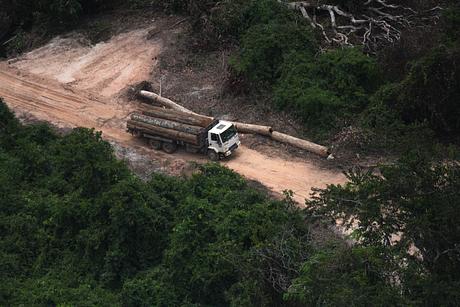 © Bruno Kelly/Greenpeace
© Bruno Kelly/Greenpeace
A major criticism of fundamentalist missionaries like the NTM is their complicity with many governments whose neo-colonial agenda is to integrate tribal peoples into national society and exploit their land and resources. As Dinaman, a Tuxá activist from Brazil explains: “They don’t only want to evangelize; they want to bring communities into the towns and cities and free up our lands to plant soya, mine and rear cattle.”
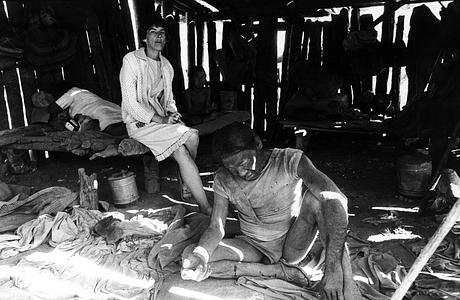
The NTM’s actions undermine Indigenous peoples’ rights by forcibly re-settling them, destroying their identity and creating dependency. It places most of its emphasis on converting Indigenous peoples rather than their health and welfare. Some of its most notorious and shameful contacts took place in Paraguay in the 1970s and 80s, when it organized brutal “manhunts” to capture uncontacted, nomadic Ayoreo-Totobiegosode - the “people from the place of the wild pigs.”
The Ayoreo were brought out of the forests against their will, herded into gruesome camps, forced into servitude and dependence on the missionaries, and terrorized into renouncing their own beliefs. Some Ayoreo died within days from diseases to which they had no immunity, and shock. Others later succumbed to illnesses which still blight them today.
Chagabi, an Ayoreo leader, told Survival in 2019: “They thought that by forcing us out of the forest, we could be saved. This was not what we wanted. After that, many Ayoreo-Totobiegosode died of diseases, respiratory problems, tuberculosis.”
Video: Chagabi Etacore, one of the Ayoreo-Totobiegosode’s most-loved leaders and environmental defenders, talks about the lingering impacts of contact. He died in August 2019: the latest victim of the epidemic of respiratory diseases contracted from contact.
Since contact the Paraguayan government has handed out most of the Ayoreo’s forest to ranchers, a crime enabled by the NTM’s forcibly contacting and removing them from their land. Many were reduced to working as labourers for the ranchers in slave like conditions.
Help Protect Uncontacted Tribes
Their religious fanaticism means they never give up
 © John Allen Chau/Facebook
© John Allen Chau/Facebook
John Chau, a North American missionary, was killed in 2018 by uncontacted Sentinelese in the Andaman Islands after he made repeated efforts to contact them. He died because he resolutely ignored the tribe’s warnings to stay away. The head of All Nations, the evangelical mission that supported him said in a statement (betraying a total lack of awareness about the Sentinelese’s wishes): “We pray that John’s sacrificial efforts will bear eternal fruit in due season.”
Despite being expelled from some countries and tribal territories the NTM continues to evangelize. President Hugo Chavez expelled 200 NTM missionaries from Amazonas state in Venezuela in 2005. However, some stayed as they were born in Venezuela, and continued to work with Mission Padamo Aviation and Support, an evangelical organisation linked to the NTM, which describes the Yanomami as “one of the most primitive people groups in the world” whose “culture is based upon revenge and is controlled by witchdoctors.”
In 1995 two JOCUM (Youth with a Mission) missionaries attempted to contact the uncontacted Hi Merimã but were caught and expelled by FUNAI. Their confiscated diaries reveal they knew they were breaking the law: "The Devil is not content to lose ground to us and will try whatever he can to make us back off, to go back. But in the name of the Lord Jesus Christ we will continue until the time appointed by the Lord. In this place, certainly neither FUNAI nor the Federal Police will find us.”

After FUNAI eventually expelled the NTM missionaries from the Zo’é tribe’s land in 1991, the NTM did not give up. Luiz Carlos Ferreira, one of the NTM missionaries involved in the disastrous contact, established a small base outside the territory and enticed some Zo’é to settle there. In 2015 public prosecutors brought a case against him and a colleague, accusing them of using Zo’é to collect Brazil nuts and keeping them in shocking conditions “analogous to slavery”. He was acquitted through lack of evidence.
However, in 2020 a judge convicted Luiz Carlos Ferreira of illegally supplying firearms to a Zo´é man. He was fined US$4,400 and sentenced to 2 years and 8 months imprisonment, though this was later commuted to community service. The prosecutors’ office noted that: “The missionaries’ activities in the region were extremely harmful, having already caused deadly epidemics among the Indians” and violated the Zo’é’s right to self-determination. The judge said the firearm was given to “a totally vulnerable population” and that giving it to the Zo’é “brought risks both to the physical integrity of the Indigenous people and to their culture” including contracting diseases.
Find out more about uncontacted tribes
 © Rosa Gauditano/APIB/Survival International
© Rosa Gauditano/APIB/Survival International
Help Protect Uncontacted Tribes
- Uncontacted peoples in Brazil
- Uncontacted tribes – Let Them Live (film narrated by Gillian Anderson and Mark Rylance)
- Why do they hide?
- The uncontacted tribes of Brazil face genocide under Jair Bolsonaro
- This man is the last of his tribe. Let him live in peace.
- The Last of the Kawahiva
- The Ayoreo
- Why Uncontacted Tribes Should Be Left Alone
- Uncontacted tribes: Contact, respect and isolation
- Questions and answers: uncontacted tribes
Sign up to the mailing list
Our amazing network of supporters and activists have played a pivotal role in everything we’ve achieved over the past 50 years. Sign up now for updates and actions.


